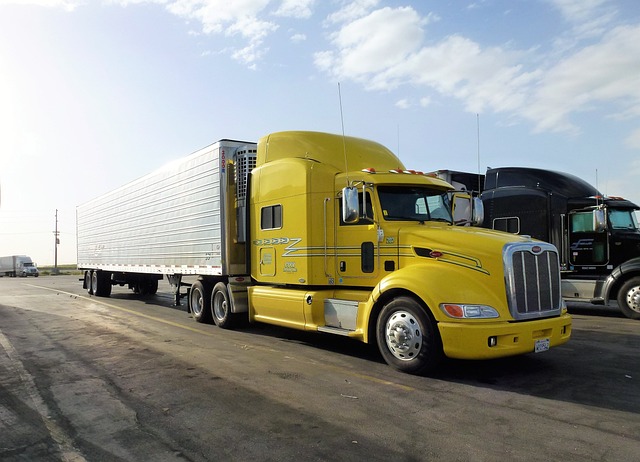Looking to register your car in California? This comprehensive guide will walk you through the entire process, from understanding the requirements to securing your license plate. To begin, you’ll need to grasp the state’s unique car registration system and prepare essential documents for DMV VIN verification. Next, schedule a visit to a local DMV office, complete the registration form, pay the necessary fees, and voilà—you’re officially registered!
- Understand the California Car Registration Process
- Gather Necessary Documents for DMV VIN Verification
- Schedule and Visit a California DMV Office
- Complete the Registration Application Form
- Pay the Required Fees and Receive Your License Plate
Understand the California Car Registration Process

Understanding the California car registration process is essential for a smooth transition into becoming a registered vehicle owner. The first step involves gathering all necessary documents and ensuring your vehicle meets state requirements. This includes proof of ownership, typically through a certificate of sale or purchase, as well as valid identification for both you and your vehicle’s previous owner(s). Once these are in order, it’s time to visit the California Department of Motor Vehicles (DMV) or complete the process online.
The DMV will conduct a vehicle history report, known as a VIN verification, using the unique Vehicle Identification Number (VIN) of your car. This step is crucial for ensuring the vehicle’s authenticity and checking any reported accidents or outstanding issues. For added convenience, many services now offer mobile VIN inspection options, allowing you to complete this part of the process from the comfort of your home or even while on the go.
Gather Necessary Documents for DMV VIN Verification

Before heading to the California DMV for registration, make sure you have all the required documents ready. One crucial piece is the Vehicle Identification Number (VIN) verification, which can be done through a mobile vin verifier or inspection service. These services ensure your vehicle’s VIN is accurate and matches the information in the manufacturer’s database. This step is essential for a smooth registration process as it verifies the authenticity of your car.
Gathering these documents ahead of time saves time at the DMV. Along with the VIN details, you’ll need to provide proof of ownership, such as a title or bill of sale, and valid identification like a driver’s license. It’s recommended to double-check the list of required documents specific to your situation, as some factors may require additional paperwork, including recent insurance information or proof of residency.
Schedule and Visit a California DMV Office

To register your car in California, scheduling a visit to a DMV office is the next step after gathering all required documents and ensuring your vehicle passes a thorough inspection, including a DMV VIN verification process. This verification ensures that the vehicle’s unique identifier, known as the Vehicle Identification Number (VIN), matches the information provided on essential paperwork like the title or registration certificate.
Many California residents opt for a convenient vin inspection by utilizing mobile vin verifier services that visit them at their location. However, for those who prefer to do it in person, selecting a suitable DMV office and booking an appointment will streamline the process. During your visit, you’ll need to present valid identification, proof of insurance, and completed registration forms. The DMV staff will conduct a comprehensive vin verification as part of the registration procedure.
Complete the Registration Application Form

To initiate the car registration process in California, the first step is to complete the Registration Application Form, also known as the Form DMV-123. This form requires detailed information about your vehicle and its history, including the make, model, year, and unique Vehicle Identification Number (VIN). The VIN is a crucial element during the registration and ownership transfer process, allowing for accurate verification of your car’s identity.
A key component of this process involves the dmv vin verification, which ensures that the vehicle details match existing records. For added convenience, many individuals opt for a mobile vin verifier or conduct a mobile vin inspection to streamline the verification step. This modern approach can be particularly useful when preparing to register a car, as it provides quick and reliable information about a vehicle’s history.
Pay the Required Fees and Receive Your License Plate

After completing your car’s registration application at the California DMV, it’s time to pay the required fees. This includes the vehicle registration fee and a $25 license plate fee. Once you’ve settled these charges, you’ll receive your new license plates. They will be assigned specific identifiers based on your vehicle’s make, model, and year.
Remember that accurate and timely completion of the DMV VIN verification process is crucial. This step involves inspecting your car’s unique Vehicle Identification Number (VIN) to ensure it matches the information in the DMV records. Many individuals opt for a mobile VIN inspection or mobile vin verification service for convenience, allowing them to complete this task without visiting a DMV office.
Registering a car in California is a straightforward process that involves several key steps. By understanding the California car registration process, gathering all necessary documents for DMV VIN verification, scheduling and visiting a local DMV office, completing the registration application form, and paying the required fees, you’ll be well on your way to legally owning a vehicle in the Golden State. Remember, proper registration ensures your safety, secures your investment, and complies with California laws.
